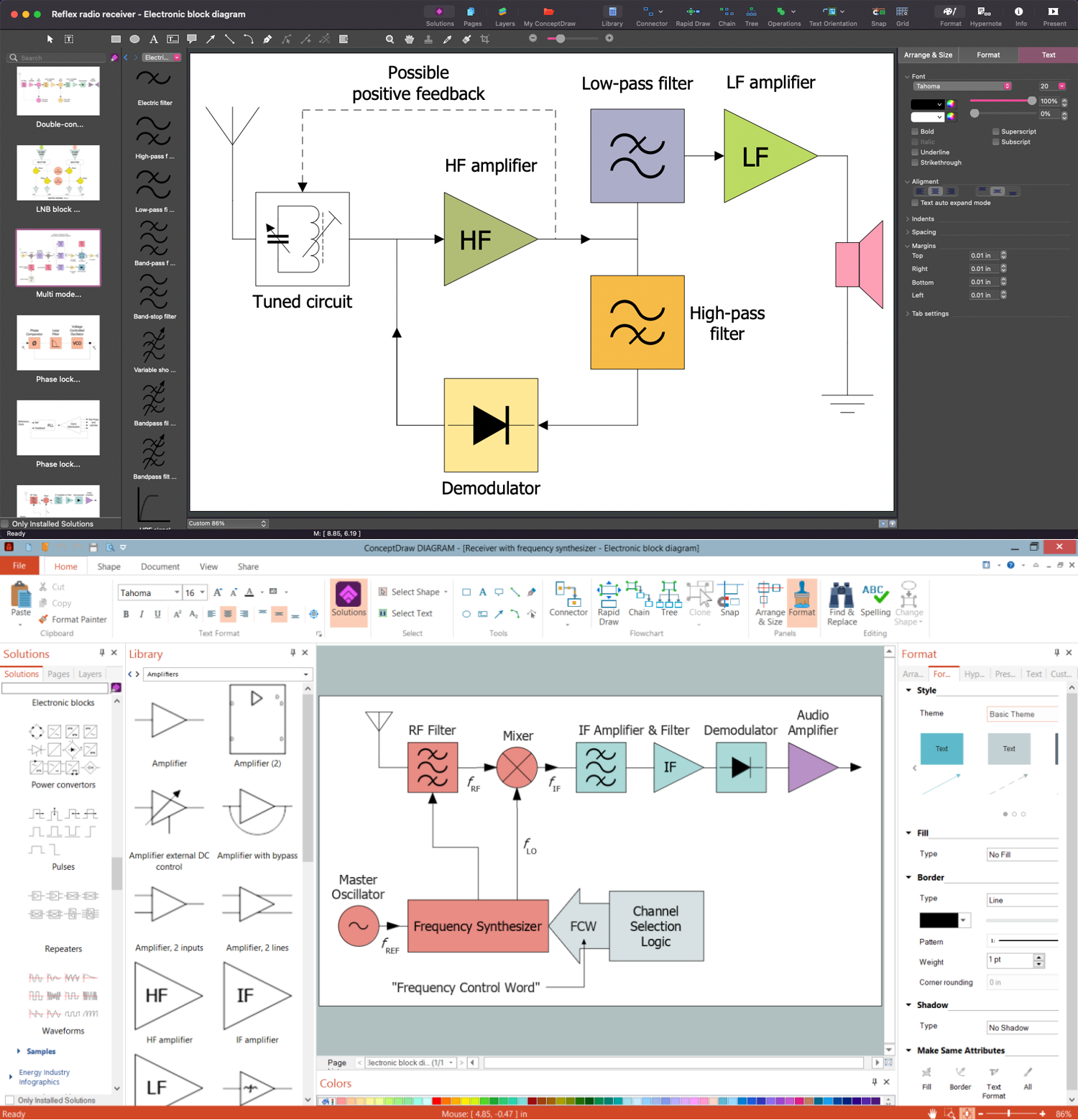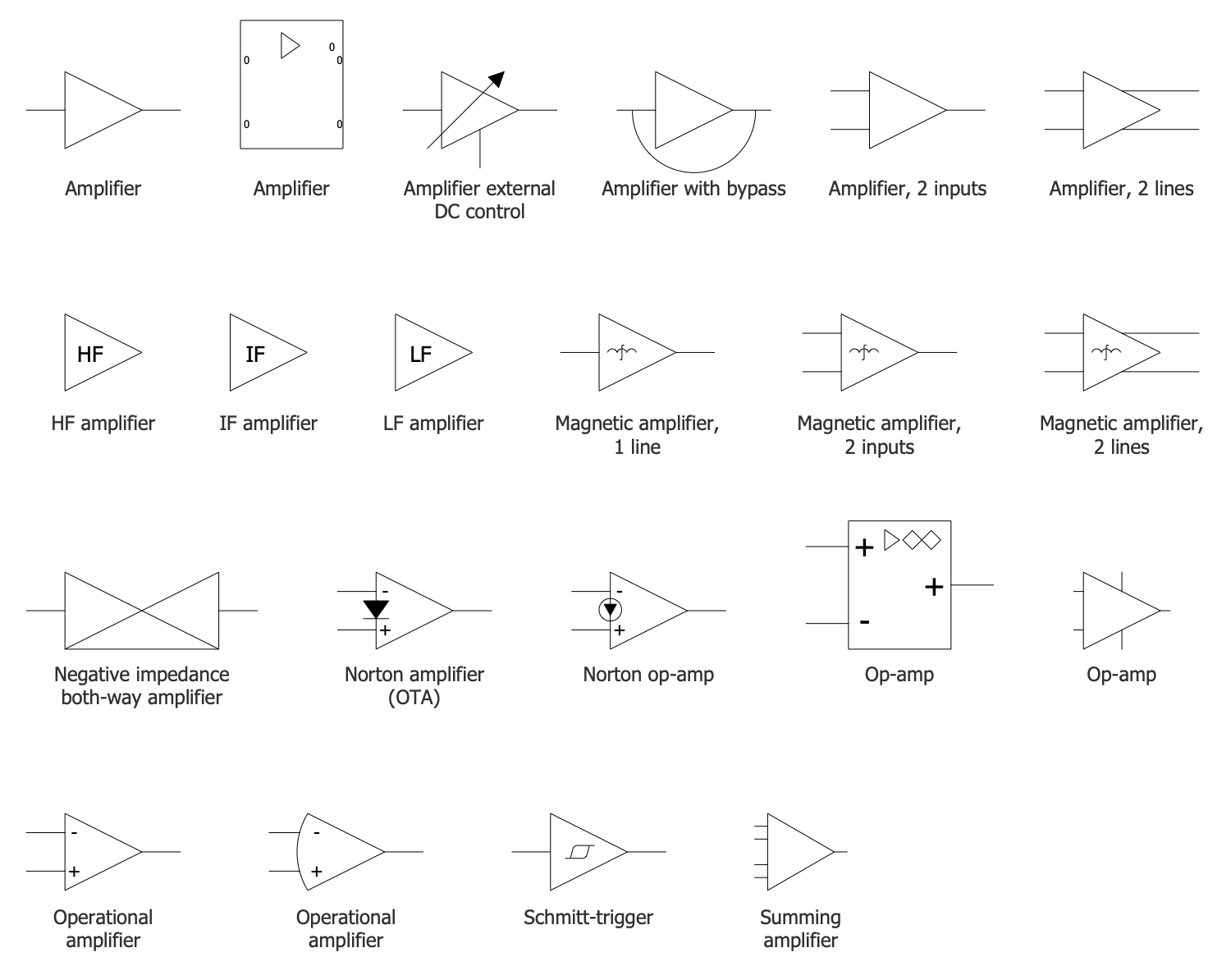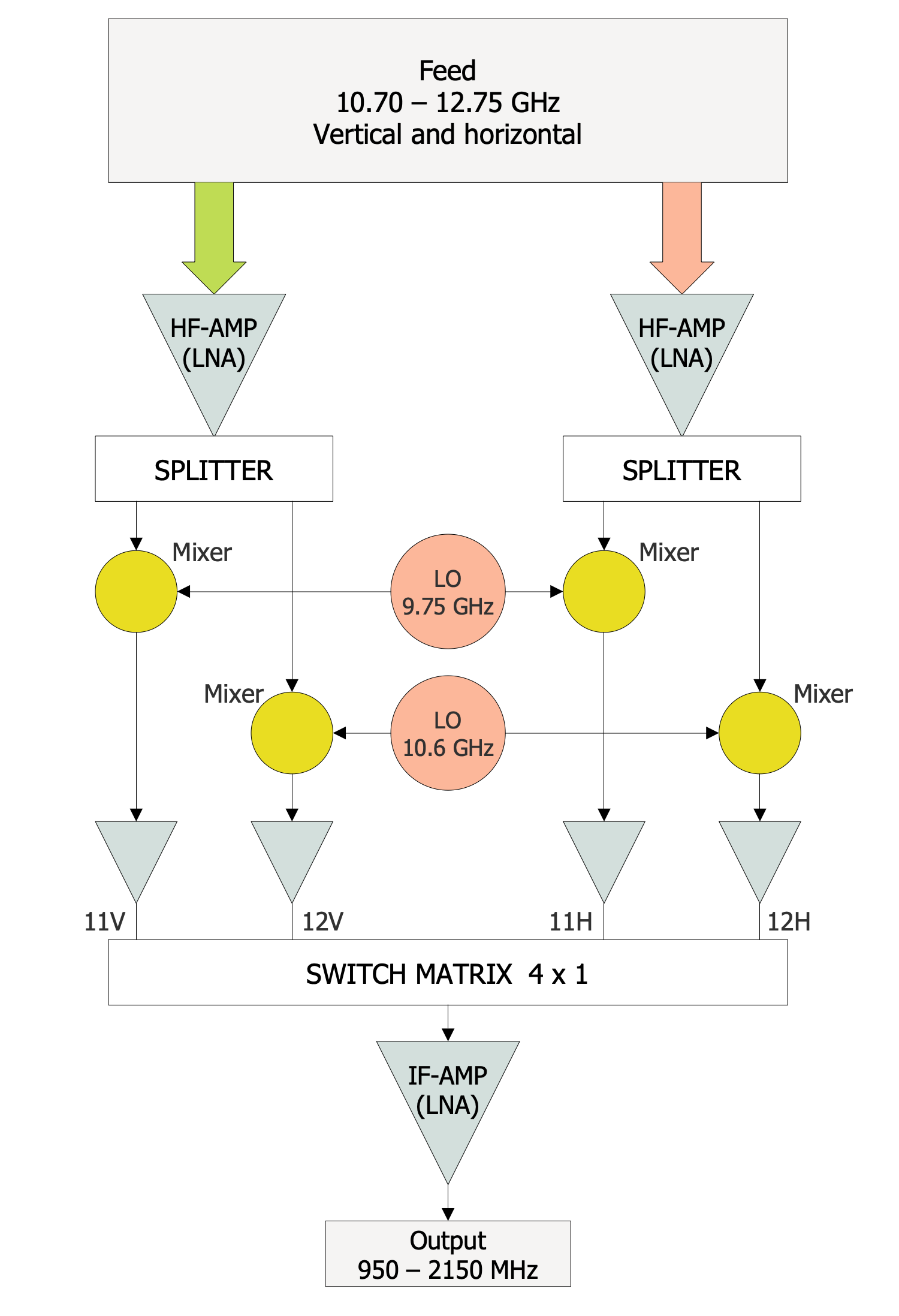Amplifiers
An amplifier (amp) is an electronic device that responds to a small power of an input signal, voltage or current and increases it to a larger output. The amplifier uses electric power from a power supply to increase the amplitude of a signal at the input and produces a proportionally greater amplitude signal at the output. The degree of amplification is defined by the amplifier gain.
American physicist and electronics engineer Lee de Forest is the founder of the amplifier, he registered a patent for a "device for amplifying feeble electrical currents" in 1906. A compact electron vacuum tube called the audion or the triode including three key electrical components was his invention. Being initially used as a telephone-circuit amplifier, it later became an essential component of radio receivers.
Currently, the amplifier is used both as a separate piece of equipment and a part of an electrical circuit in combination with other devices in various electronic systems. The placement of amplifiers in the signal chain can also differ. Being used before other signal processing stages, they are called pre-amplifiers and usually are used together with the main amplifier. The signal is boosted by the pre-amplifier and then by the main amplifier.
Each amplifier includes at least one active device, this is a vacuum tube, discrete solid state component (transistor), or a part of an integrated circuit. The bipolar transistors are the most often used, earlier popular vacuum tubes are currently used in hi-fi audio equipment.
The key parameters which characterize amplifiers are:
- efficiency - the ratio between the output power and total power consumption;
- bandwidth - the maximal frequency range that can be passed;
- gain - the ratio of output voltage, power, or current to input;
- noise - the degree of undesired noise in the output;
- stability - the ability to avoid self-oscillation;
- linearity - the ability to provide constant gain for any input level;
- output dynamic range, rise time, slew rate, settling time, ringing, overshoot, and some other parameters.
One differs weak-signal amplifiers and power amplifiers. Sometimes, a single amplifier is not enough to increase the output signal to the desired level, therefore several amplifiers are used consequently: the output of the first amplifier is fed into a second, then to the third, if needed, and so on until the required output level is achieved.
Amplification has a wide application in modern electronic equipment, radio, television, and audio equipment, hi-fi stereo equipment, digital equipment, microcomputers, computers, wireless communications, and broadcast transmitters. Computers and microprocessors can include millions of logic gates, all they are specialized types of amplifiers. Audio voltage amplifiers are used to amplify the low-level signals from microphones, tapes, disk pickups, they help to correct the tone of signal and mix signals from different inputs. Audio power amplifiers obtain the input from a series of voltage amplifiers and then drive loudspeakers.
The frequency of the electronic signals differs for various equipment. The classification depends on the size of the signal, physical configuration, and way of processing the input signal.
Amplifiers are classified by the frequency range. RF amplifiers amplify frequencies in the range between 20 kHz and 300 GHz, while audio amplifiers operate in the range of human hearing from around 20Hz to 20kHz, for instrumentation and servo amplifiers these frequencies are much less.
Amplifiers operate in a wide range of amplitudes, however, as the input amplitude increases, the output power cannot increase at the same rate and unlimitedly. The limit in the power that amplifiers can produce leads to the stop of the output at a particular level at a certain moment. The amplifiers also differ in bandwidth and are narrow or wide.
The amplifier changes the amplitude of a signal waveform without changing other parameters like frequency or wave shape. Therefore the output signal is identical to the input signal in shape but boosted. In the opposite case, one tells about the frequency distortion.

Example 1. Amplifiers Development in ConceptDraw DIAGRAM
Amplifiers are described according to the properties of their inputs, outputs, and how they relate. There is an enormous quantity of kinds of amplifiers in all shapes, sizes, and purposes.
- Transistor amplifiers use bipolar junction transistors (BJT) or metal oxide semiconductor field-effect transistors (MOSFET) as the active element. Currently, they are the most used type of amplifiers.
- Vacuum-tube amplifiers use a vacuum tube as the active device. They find their application in high-power devices: radars, communications equipment, countermeasures equipment, microwave devices, high-end audio equipment, etc.
- Video amplifiers are wide band amplifiers, which process video signals and preserve the DC level of the signal. They are used in video equipment, TV and radar systems. The bandwidth varies from 0 Hz to more than 6 MHz.
- Audio power amplifiers amplify low-power electronic audio signals to a level enough for driving loudspeakers or headphones. They often have two output channels and provide equal power to each of them.
- Musical instrument amplifiers are a kind of audio power amplifiers used to increase the sound level of musical instruments.
- Radio frequency amplifiers are tuned amplifiers. Their gain and noise performance are low, frequency is managed by a tuned circuit, and the bandwidth varies from wide to narrow.
- Intermediate frequency amplifiers are used in radio, TV, and radars. They are tuned amplifiers and operate at different frequencies according to the type of equipment, but in any case, their frequency is lower than that of the received radio signal but higher than produced audio or video signals.
- DC amplifiers are applied in many electrical control systems and measuring instruments and amplify DC (0 Hz) voltages or very low-frequency signals.
- Microwave amplifiers are traveling wave tube amplifiers (TWTAs) used at low microwave frequencies and can amplify across a broad spectrum of frequencies.
- Operational amplifiers are small signal amplifiers currently used in integrated circuits. Initially, they were used for performing mathematical operations in early analog computers. Usually the op amps have very high open loop gain and differential inputs.
- Fully differential amplifiers are the kind of operational amplifiers with differential outputs. Often they are constructed using BJTs or FETs.
- Buffer amplifiers are placed between two circuits, have a high input impedance and a low output impedance. Typically, they have a gain of one and equal output and input amplitudes. Buffer amplifiers are designed to except the affecting of one circuit on the other and are also used as impedance matching devices.
- Ultrasonic amplifiers are used in remote control systems, ultrasound scanning and ultrasonic cleaning devices, and operate with frequencies from around 20kHz up to 100kHz.
- Wideband amplifiers have an extremely wide bandwidth and low gain. They are used in equipment that measures signals over a wide range of frequencies, for example, in oscilloscopes.
- Weak-signal amplifiers operate with extremely small input signals and generate minimal internal noise. They are used in wireless receivers, acoustic pickups, audio tape players, and compact disc players.
- Power amplifiers, linear and nonlinear amplifiers, switched mode amplifiers, distributed amplifiers, and negative resistance amplifiers are additional examples of amplifiers variety.
Example 2. Amplifiers Library Design Elements
Moreover, the amplifiers are classified from A to D class:
- Class A amplifiers are the most linear form of amplifiers. They provide the best output quality, with the lowest distortion, but are large, heavy, power-hungry, and inefficient.
- Class B amplifiers are more efficient and cheaper and offer poorer linearity. They often use two amplifiers to cover the complete signal and suffer from crossover distortion, where one half of the amplifier turns off and the other operates.
- Class C amplifiers have higher efficiency but poor output quality and a high level of distortion. They are often used for RF amplifiers.
- Class D amplifiers use switching technology within the amplifier and have high efficiency.
- Class AB joins the best properties of both A and B classes: the quality of class A and the efficiency of class B. Class AB amplifiers strive to overcome the cross-over distortion and achieve better linearity, at the same time by sacrifying efficiency.
Electronic Block Diagrams solution for ConceptDraw DIAGRAM software offers a wide range of tools for designing Electronic block diagrams of different kinds, schematics of amplifiers and complex circuits including them as a part. The included vector design elements — amplifiers, repeaters, electronic blocks, power convertors, delay elements, pulses, electric filters, waveforms, and many more provide the ability to create an Electronic circuits and Electronic block diagrams of any complexity.
Example 3. LNB Block Diagram
The Electronic circuits and Electronic block diagrams samples you see on this page were created in ConceptDraw DIAGRAM software using the drawing tools of the Electronic Block Diagrams Solution. These examples successfully demonstrate the solution's capabilities and the professional results you can achieve using it. An experienced user spent 5-10 minutes creating each of these samples.
Use the drawing tools of the Electronic Block Diagrams solution to design your own Electronic block diagrams and Electron circuits infographics quick, easy, and effective.
All source documents are vector graphic documents. They are available for reviewing, modifying, or converting to a variety of formats (PDF file, MS PowerPoint, MS Visio, and many other graphic formats) from the ConceptDraw STORE. The Electronic Block Diagrams Solution is available for ConceptDraw DIAGRAM users.

